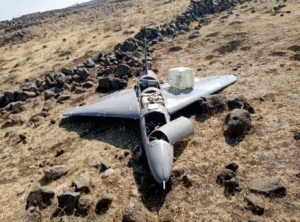2 results
Current Filter
Shahed-131/136 series
Iranian-designed powered munitions of the type often known as one-way-attack unmanned aerial vehicles (UAVs), or drones, with a range of 700–900 km for the Shahed-131, and 1,000–2,000 km for the Shahed-136. The Shahed-131 has a length of 2.5 mand wingspan of 2.2 m, while the Shahed-136 has a length of 3.5 m and 2.5 m wingspan. Both munitions use GNSS and inertial navigation for guidance and typically act as pseudo-missiles, flying towards pre-programmed coordinates before exploding on impact. As these two munitions are visually similar, it can be hard to identify them precisely based on open-source material. Where positive identification of munition type is not possible, these munitions are listed as ‘Shahed-131/136 series’ in the OSMP.

Collection
Iran-Israel conflict June 2025
Dozens of verified images of munitions used by Iran and Israel during the June 2025 Israel-Iran conflict








